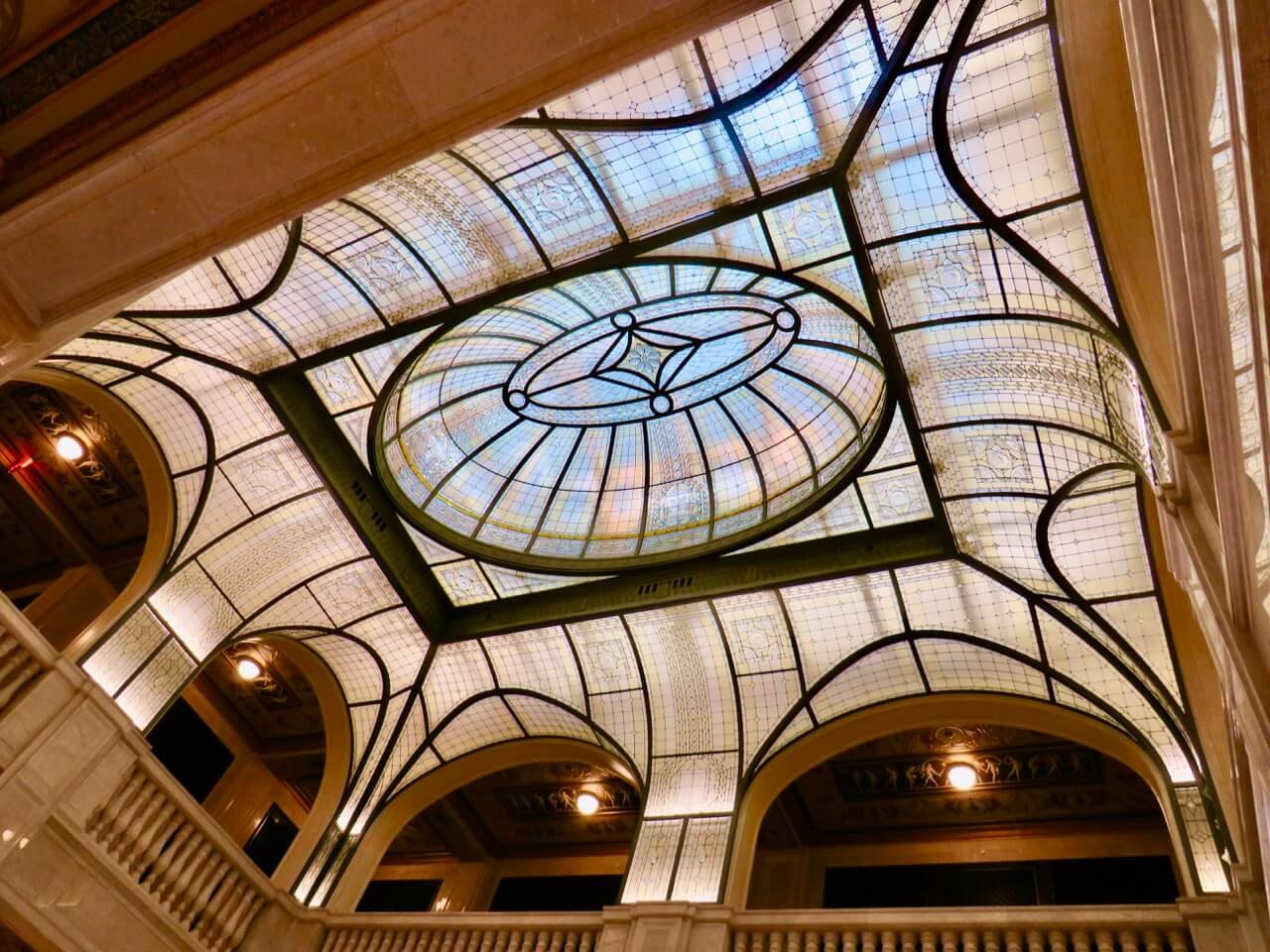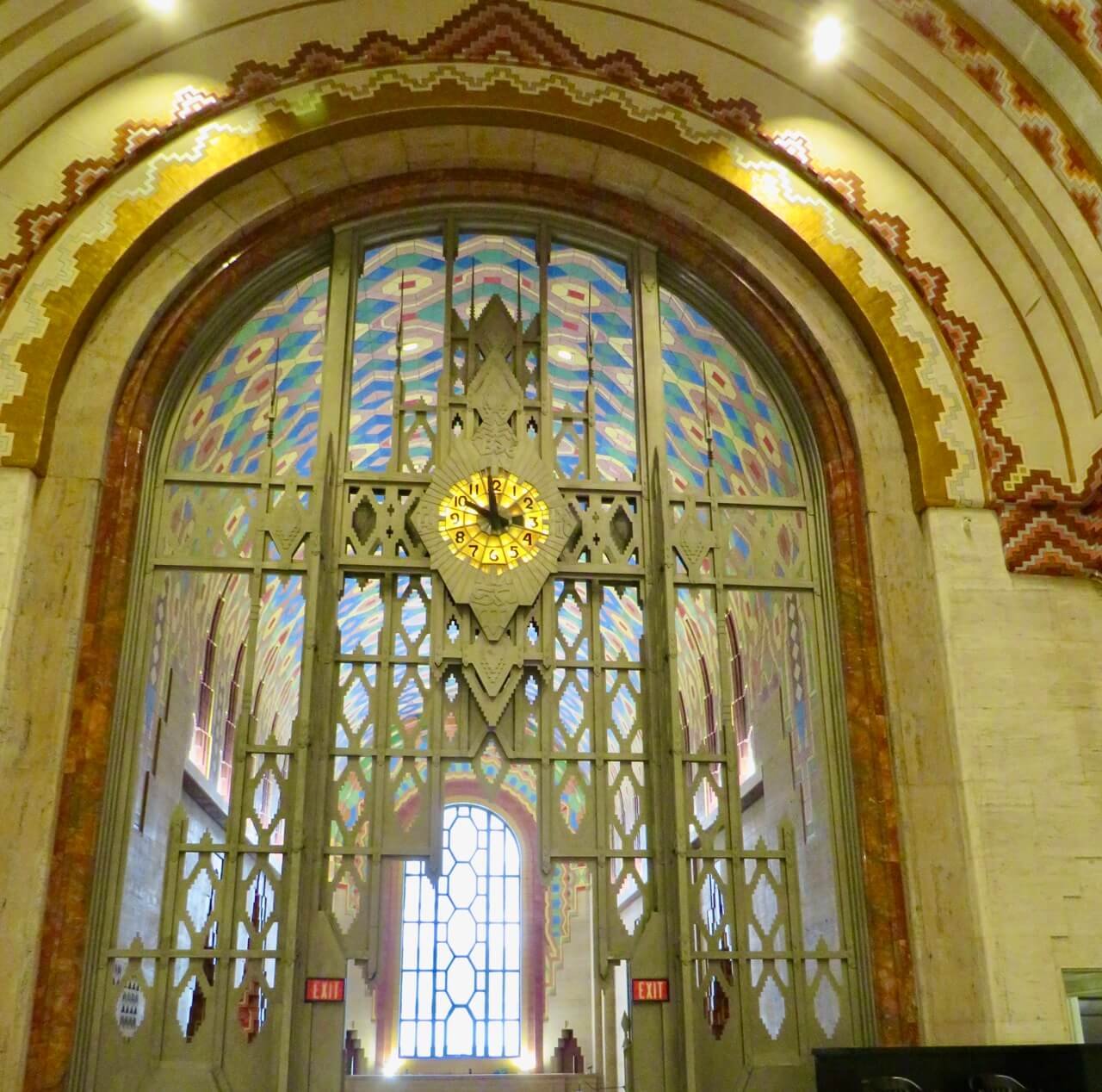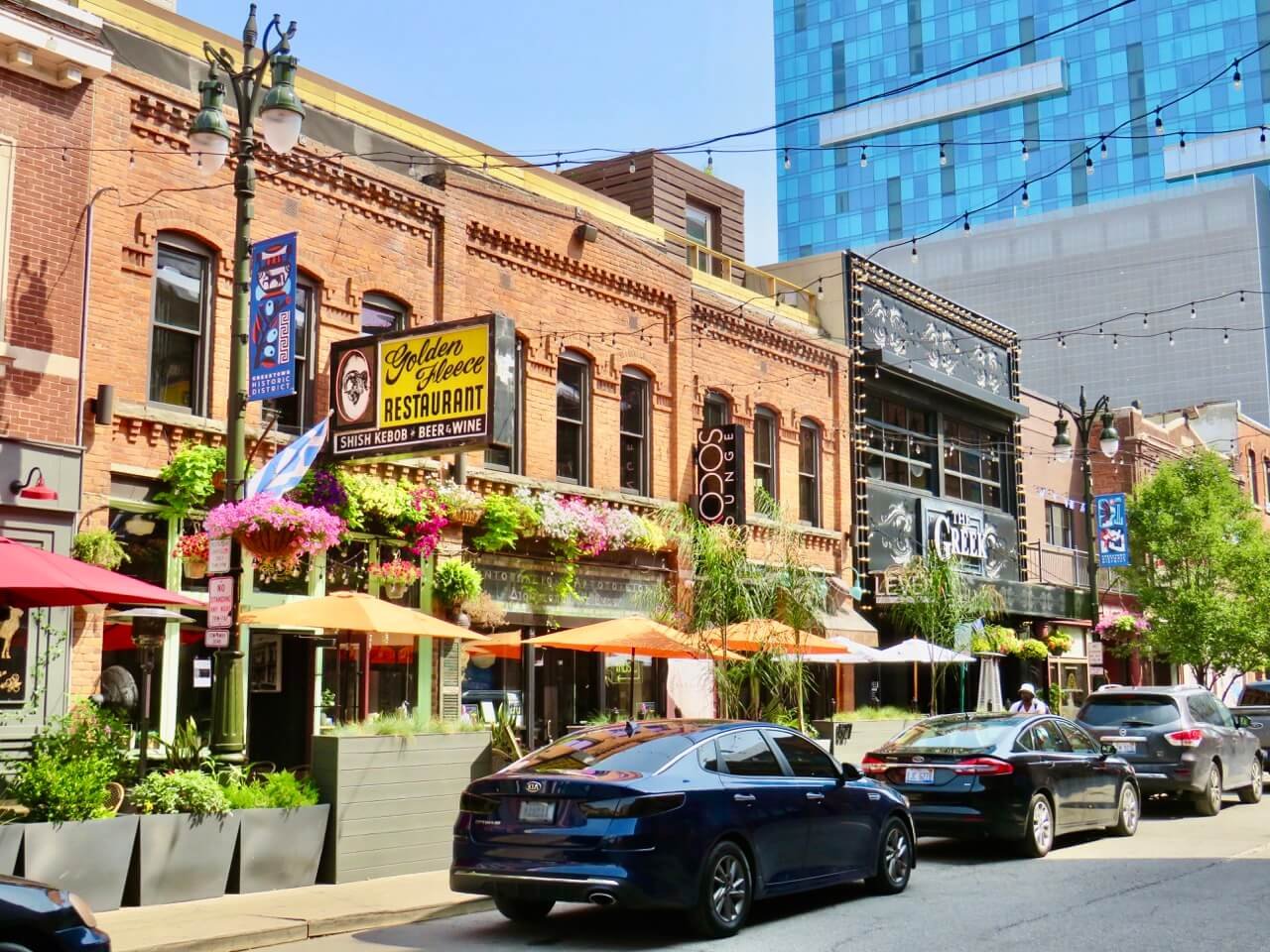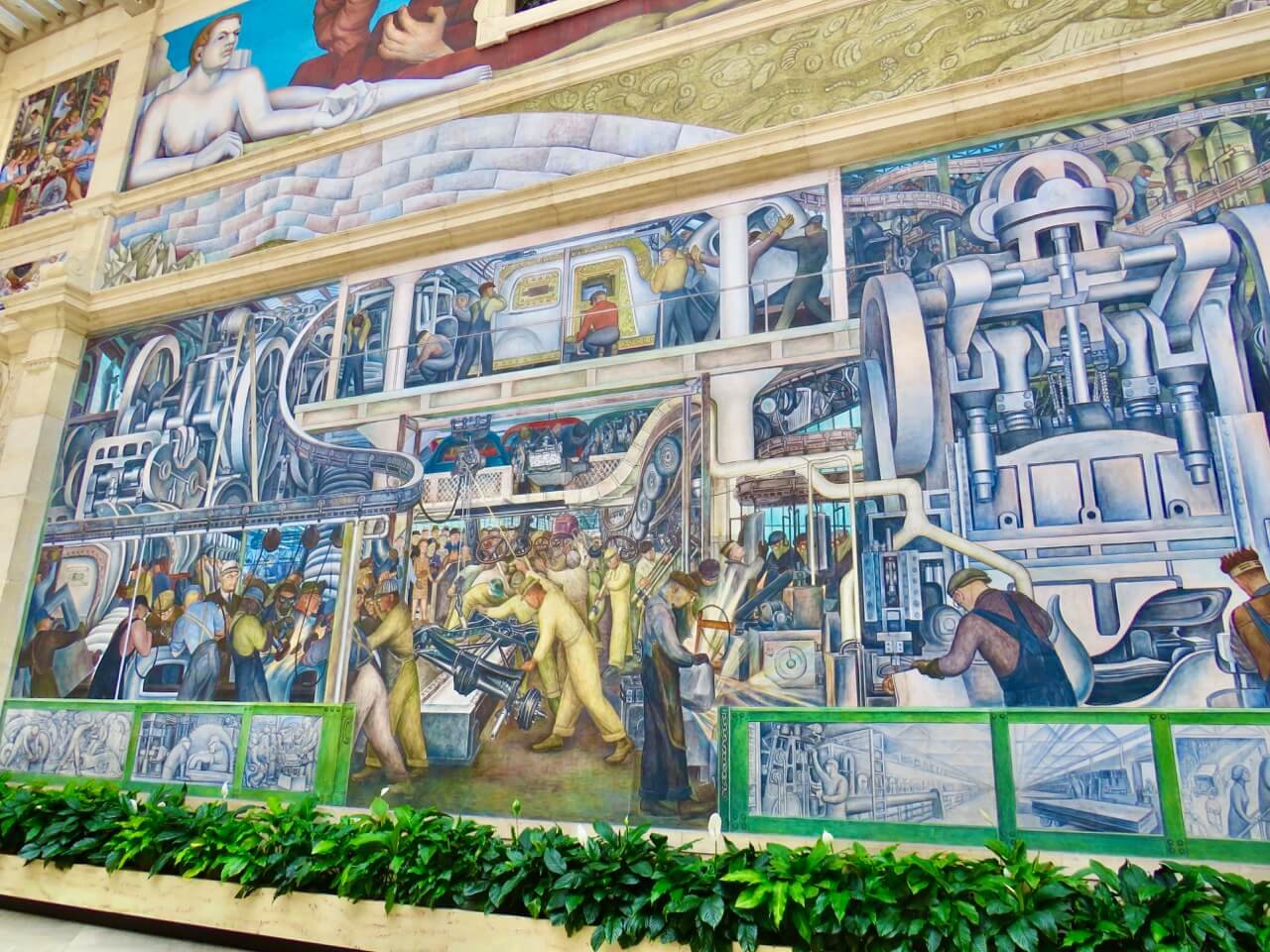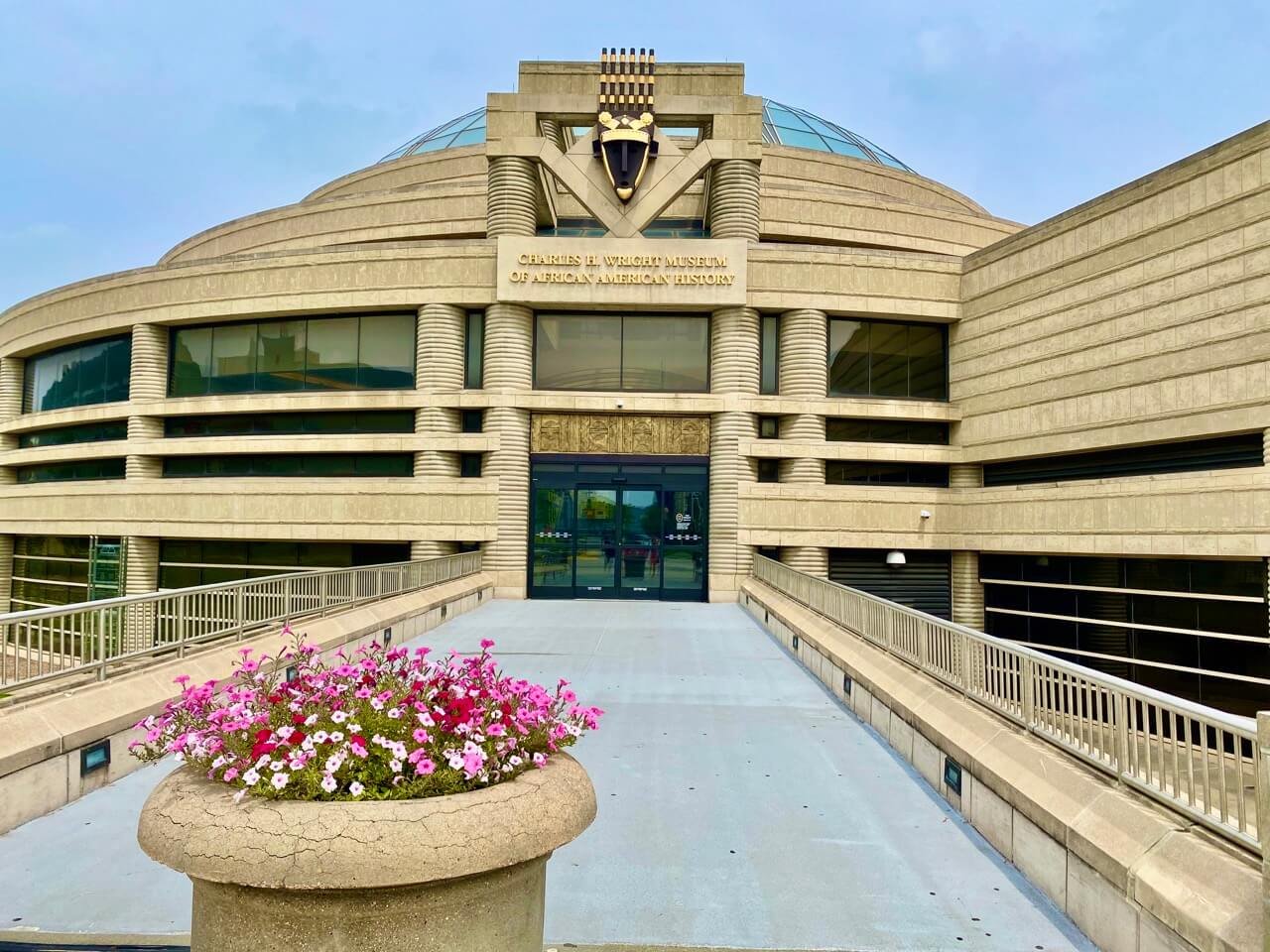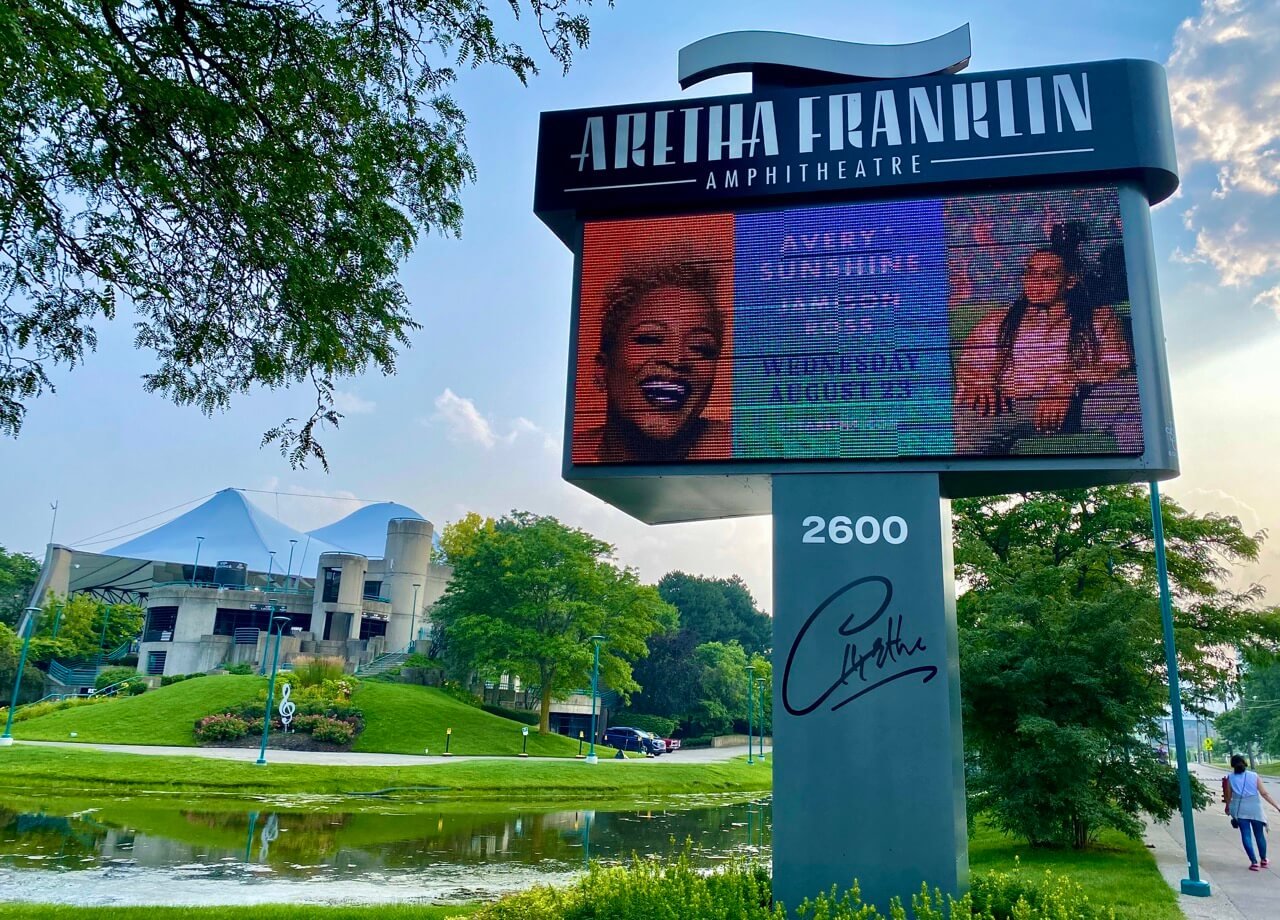The Top Things to Do in Detroit: The Motor City is Back!
If one thing is clear, it’s that Detroit is on the move and ripe for exploration. As Maureen Littlejohn makes clear in this piece, there’s a unique opportunity here to dive into the city’s storied history, while visiting the sites and attractions that showcase the best of Detroit’s present, and offer insight into an exciting future. Here are some of the top things to do in Detroit on your next visit.
The GM Renaissance Headquarters. Photo Credit: Maureen Littlejohn
I was in for a shock when my husband and I visited Detroit this summer.
The city I remembered from the 1980s when I was studying across the river at the University of Windsor, was gone. No longer scary, gritty, and tough, it had been transformed.
My first taste of this rebirth was strolling through downtown. It was alive with restaurants, patios, and even a funky, arty “Midway” that lit up at night.
People were out and about. No one was looking over their shoulders and running for their cars.
Detroit’s Past, Present & Future
Detroit’s story is a bit heartbreaking. But it is also one of determination, vision, and overcoming obstacles.
At the turn of the last century, the city was a goldmine of industrial innovation. Henry Ford lead the way. Motor vehicles were the future and fortunes were made.
Art, architecture, and culture were highly prized. Wealth and prosperity were everywhere.
Those were the heydays. But white flight to the suburbs changed all that.
By the 1960s decay and destitution reigned in the city’s downtown. Its monied tax base had moved out and the municipal government’s coffers were empty. Many neighbourhoods were left to fend for themselves.
Detroit’s present day skyline. Photo Credit: Unsplash
Despite this, in a backhanded way, something positive was afoot – preservation through poverty. Many of Detroit’s grand buildings were in decline but they were not knocked down. Some of their interiors were patched over and temporary offices moved in. Many stood empty for years. Even though their ornate embellishments were walled in or boarded up, they survived.
The grand old structures you can see today still have original sculpted entrances, bronze engraved elevator doors, and mosaic tiles.
They have been uncovered and honoured because in recent years developers with a desire to protect the beauty of the past have stepped in.
*Please note that this post contains affiliate links. Simply put, this means that we may receive a small commission for our honest and heartfelt recommendations, at no additional cost to you.
How Can You Best Explore Detroit on Your Visit?
Set Eyes on Detroit’s Downtown Architectural Treasures
Book Tower
The Book Tower skylight. Photo Credit: Maureen Littlejohn
An amazing feat of architectural rebirth can be seen at Book Tower, one of the largest adaptive reuse projects in Michigan. Recently opened as a residence and apartment hotel called The Roost, the project took seven years to complete at $400 million. Head here to take a look at availability at The Roost during your visit to Detroit.
The first, lower part of the Louis Kamper-designed, Italian Renaissance Revival-style building went up in 1917. In 1926 the 36-story-high tower was added. It was the tallest structure in Detroit upon its completion.
Book Tower, named for the wealthy Book family that built it, was empty for a decade before the Bedrock development company acquired it in 2015.
From a depressing state of disrepair, it has morphed into a homage to Detroit’s glory days. Marble hallways have been reinstalled, 29 caryatids (female nudes intended as a nose-thumb to the conservative Catholic church across the street) on the exterior have been restored, and the building’s breathtaking skylight in the entrance rotunda repaired with thousands of glass panels.
Even if you don’t stay there, you must go in and check the ceiling in the lobby entrance.
Guardian Building
Another downtown jewel of note is the Guardian Building. Architect Wirt Rowland, who also did the Buhl building across the street, gave it a bold flamboyant Art Deco look with Aztec, Native American, and Arts & Crafts influences.
The painted murals, intricate tile work, mosaics, stained glass, and marble fixtures were provided by 40 Michigan artists.
Its Tiffany clock is one of the few left in the world that works.
Known as a Cathedral of Finance, the 40-story skyscraper was completed in 1929 for Union Trust. Hit hard by the stock market crash, the bank was reorganized into the Union Guardian Trust. Today the National Historic Landmark is simply known as the Guardian Building. Owned by Wayne County, it houses its administrative offices as well as a Bank of America.
Anyone can go in and take a gander. The vaulted-ceilinged central space had casual seating spots and there was a gift shop where you can sign up for a guided walk with City Tour Detroit.
My husband and I did just that and learned a lot from local guide and resident Paul Vachon. Author of Becoming the Motor City: A Timeline of Detroit's Auto Industry, published by Reedy Press in 2021, Vachon has written extensively about the city over the years.
Take a Downtown Detroit Walking Tour
Our three-hour walking tour with Vachon (from City Tour Detroit) provided the background on iconic downtown buildings and public art, including the Joe Louis fist that was gifted to the city by Sports Illustrated.
GreekTown in Detroit. Photo Credit: Maureen Littlejohn
It also included a People Mover ride, a stroll through Greektown, and a history lesson at Hart Plaza about French explorer Antoine de la Mothe Cadillac’s landing there in the 1700s.
Vachon also shared information about Mariners Church, where the bell tolled 29 times for each man lost on the Edmund Fitzgerald. Gordon Lightfoot’s rendition of the tale got a little rewrite.
“Lightfoot wrote the song before ever coming to the church and called it a ‘musty old hall.’ After actually coming and seeing the church he changed the words to ‘rustic old hall.’ Of course, it’s not really that rustic or old. The bell tower was built in 1955.”
A great thing about this tour was that it included a hot dog and soft drink at American Coney Island.
Visit Detroit’s World-Class Galleries and Museums
Detroit Institute of Arts
The Diego Rivera fresco at the Detroit Institute of Arts. Photo Credit: Maureen Littlejohn
One of the top six art institutes in the U.S., the Detroit Institute of Arts (D.I.A.) boasts more than 65,000 pieces of art.
One hallway is home to world-famous Mexican artist Diego Rivera’s Detroit Industry fresco. As I stared at the huge depiction of Ford’s motor plant, a docent came over and explained that it had been commissioned by Edsel Ford, who did not require final approval.
“We are lucky to have this. Rivera also did a fresco for the Rockefeller Building in New York. But because Rivera, a Communist, had inserted a portrait of Lenin and refused to take it out, it never saw the light of day.”
Other highlights for me were Vincent Van Goh’s Self-Portrait and The Wedding Dance by Pieter Bruegel the Elder.
The latter was especially intriguing because a description beside the painting revealed how conservators had uncovered certain previously unknown elements of the painting. One was the artist’s signature. Another was how sometime after the painting was completed in 1566, the men’s codpieces had been erased…only to be reinstated in 1941.
Much of the viewing public at that time was disapproving of the phallic contraptions.
Henry Ford Museum of American Innovation
Jam-packed with history-making inventions, this museum was mind-boggling. Upon entering, I noticed a flashing neon exterior of the first McDonald’s restaurant.
There was a procession of presidential limousines, including the one carrying JFK when he was killed. The bus where Rosa Parks defied Jim Crow law was there. As was the Allegheny Steam Locomotive, one of the biggest, most powerful locomotives ever built.
Buckminster Fuller’s circular Dymaxion house clad in aircraft-grade aluminum was another highlight.
The history of flight was covered, as was the evolution of Ford’s early vehicles. The museum even had an exhibit with a reproduction of the Julia Child TV show kitchen.
Truly something for everyone.
Motown Museum: Home of Hitsville USA
The inviting exterior of Detroit’s Motown Museum. Photo Credit: Maureen Littlejohn
Martha and the Vandellas, The Supremes, The Four Tops, The Temptations, Marvin Gaye, Stevie Wonder. I could go on and on. Motown music was the soundtrack of my youth and I love it just as much now.
That’s why a tour of Hitsville U.S.A. was imperative.
It started with a documentary about the history of Motown. A guide then took the group through a recreation of founder Barry Gordy’s apartment at the top of the house, plus a gallery of memorabilia.
We ended up in Studio One where microphones hung from the ceiling, a vibraphone played by Steve Wonder sat in one corner, and a Steinway grand piano in another.
“A performer came to see us and tried to play the piano. It was out of tune. So he paid to have it shipped to New York and fixed. Do you know who it was?” asked our guide.
We all shook our heads.
“Paul McCartney.”
Finally, we were instructed on how to do the Temptation’s signature move. Two steps to the right, two steps to the left. Then, reading lyric sheets on a couple of music stands, we all joined together to sing “My Girl.”
We didn’t sound bad. That’s probably because one of our group had an outstanding voice.
“I’d like you all to know we have here today Thelma, the baby sister of the lead singer of the Four Tops, Levi Stubbs,” shouted her partner.
A collective gasp rippled through the studio. We’d been treated to a true musical moment.
Heidelberg Project
The Heidelberg Project in all its wonder. Photo Credit: Maureen Littlejohn
This ever-evolving art installation is in the McDougall-Hunt neighbourhood, where you can see the Detroit of the 1980s. Burned-out houses and empty lots.
But, in 1986 out of the despair bloomed hope in the form of a brightly colored found-object installation on Heidelberg Street. The brainchild of artist Tyree Guyton, who was assisted by wife Karen, and grandfather Sam Mackey, the project spreads over a couple of blocks.
Guyton was born and raised on this street.
Parking the car, we got out and ambled among the painted car doors, stacks of broken toys, old TVs, and worn-out shoes. Implicit in the artwork was the need for social justice. Fascinating and sobering, it reflected frustration with inequality and anger at racism.
Considered a Detroit landmark, the Heidelberg Project catapulted Guyton to global fame and he continues to tweak the installation, adding pieces and retiring others.
Charles H. Wright Museum of African American History
The Charles H. Wright Museum of African American History. Photo Credit: Maureen Littlejohn
This museum’s permanent exhibit, And Still We Rise, is a comprehensive look at the African- American experience.
Especially moving was the slave ship exhibit. It was a life-sized replica of one of the vessels that brought so many Africans against their will to America. Below deck, where people were shackled and stacked like timber, was particularly horrifying.
The exhibit was also about the resilience of Black Americans and the rich cultural contributions they have made to society. It paid homage to the many who have excelled in their fields and are indisputable role models, from sports and music stars to politicians such as Barak Obama.
Get A Deeper Understanding of Detroit’s Underground Railroad Experience
First Congregational Church of Detroit
Run by volunteer members of the congregation, this Flight to Freedom experience is offered year-round by appointment.
We joined a group of Outward Bound teens and were given pink wristbands printed with the word “Slave.” These symbolized shackles.
“What’s your name?” asked Reverend Lorenzo Houston.
“James,” answered a young man.
“No, it is not. You no longer have a name. You are a slave.”
Told to turn off our phones and to be quiet, we were led to the basement where we were taken to the Door of No Return, signifying the departure from Africa on a slave ship. Led by our Underground Railroad conductor “Moses,” we learned the brutality of plantation slavery when one enactor told a story of the master’s relentless beatings.
Did we want to make a break for freedom? You bet.
The dark basement had been staged to resemble various stops on the Underground Railroad. We met a kind Quaker lady in a safe house who warded off vicious bounty hunters.
Finally, we reached Detroit, code name ‘Midnight.’
The journey ended with a glimpse across the river to Canada. Freedom.
Homespun yet very moving, the experience had a strong message.
“This is not Black History, but American history. It is of value to all of us,” Reverend Houston explained.
He pointed out that freedom is not free. There is a price to pay.
“Those slaves had to fight for their freedom. Some states today want to rewrite history. We can’t let that happen,” he said, pointedly looking at the Outward Bound group.
“You are the future.”
What Else Should You Consider on Your Detroit Visit?
Take a Break on the Detroit International Riverwalk
The stunning Aretha Franklin Ampitheatre. Photo Credit: Maureen Littlejohn
Next to the GMRenCen, along the Detroit River, is the city’s 3.5-mile-long RiverWalk. Taking a stroll in the afternoon, we joined people enjoying the sunshine and views. There was a kiosk that offered bike rentals and we passed the Viking Octantis, a Great Lakes cruise ship docked at the newly built port of call.
We got smiles and warm greetings from everyone who passed, including two security cyclists.
A little further down the river, we discovered the Aretha Franklin amphitheater where people were lining up to buy concert tickets.
Bring Your Appetite for Detroit’s Restaurant Scene
The pizza at Buddy’s and a fresh salad at Dime Store. Photo Credit(s): Maureen Littlejohn
Here are a few to consider:
Dime Store: In Chrysler House, formerly the Dime Building, this is a popular breakfast, lunch, and brunch spot with locals. Try new twists on waffles, eggs benny, and avocado anything.
Cliff Bell’s: Fabulous 1930s décor. Go early, have dinner, and enjoy the jazz. First set starts at 7:30 p.m. Second set is 9:30 p.m. Classic menu of chops, steaks, chicken, and fish. Try the delicious potato croquettes as a starter.
Buddy’s: This is a chain that was started in 1946. Authentic Detroit pizza, deep dish, and extra cheesy. Great service at the downtown location and it’s good to know the 20% gratuity is included in your bill.
American Coney Island: This was the original Coney Island outlet. The hotdog with chili, onions and mustard was brought to Detroit in 1917 by Gust Keros. He came up with the name after spending some time in New York. The recipe came from his Greek homeland. Lafayette Coney Island next door was started by his brother. Identical food, but Lafayette has old-school diner décor.
The Whitney: A gorgeous dining experience inside an imposing mansion built in 1894. Original owner David Whitney Jr. was a lumber baron and the wealthiest man in Detroit at the time. Mansion specialties include Beef Wellington and Seafood Sauté. Don’t miss the Ghost Bar on the 3rd floor.
Baobab Fare: Named one of the best new restaurants by the New York Times, it features traditional dishes from Burundi. The restaurant employs refugees and asylum-seekers. The sign in the window states Detroit ni nyumbani, meaning Detroit is home. Try Nyumbani, tender beef simmered in tomato sauce, or KuKu, pan-friend chicken in mustard-onion sauce.
Highlands: Located in the GMRencen, this posh restaurant is on the 71st-72nd floors. It no longer revolves, but the views of the Detroit River and skyline are stunning. The menu is classic steakhouse with a twist, such as Waygu Bavette with mole rojo. For a special occasion try the three-course option with wine pairings.
Stay in Learning Mode at these museums and sites
Detroit Historical Museum: This museum offers a comprehensive look at Detroit's history, from its early days as a frontier outpost to its role in the automotive industry.
Detroit Historical Society’s Dossin Great Lakes Museum: Located on Belle Isle, this museum explores the maritime history of the Great Lakes, featuring artifacts and exhibits related to shipping, boating, and maritime technology.
The Henry Ford Estate - Fair Lane: The former home of Henry Ford, founder of the Ford Motor Company, is a historic mansion surrounded by stunning gardens. Tours are available to learn about Ford's life and legacy.
Detroit Science Center (Michigan Science Center): This interactive science museum is great for families and features hands-on exhibits covering various aspects of science, technology, engineering, and mathematics (STEM).
Detroit Opera House: This historic venue hosts a variety of performances, including opera, ballet, Broadway shows, and concerts.
Thanks to this trip, my attitude about Detroit has changed. The Motor City has turned the corner and is back, pedal to the metal!



